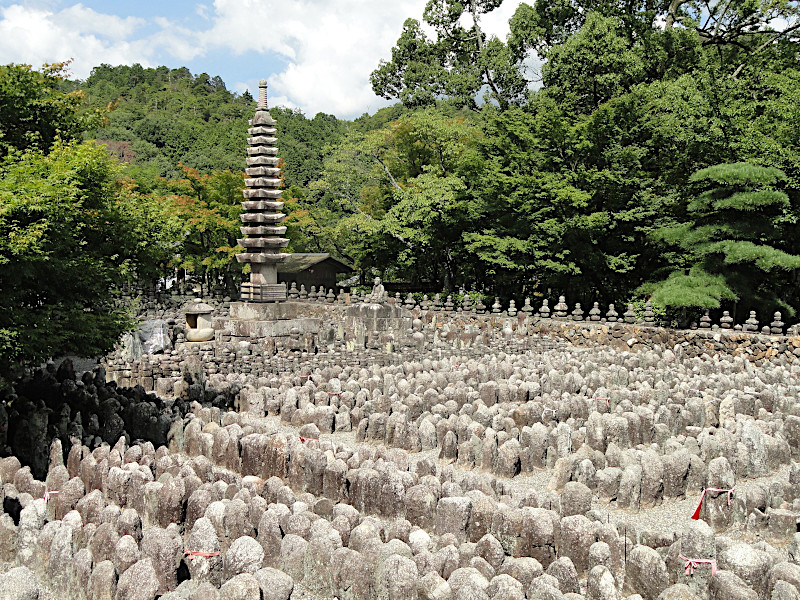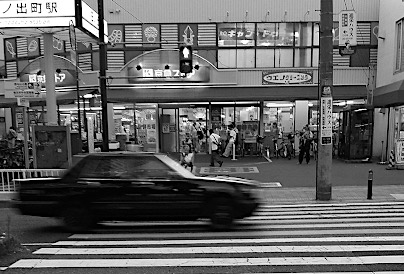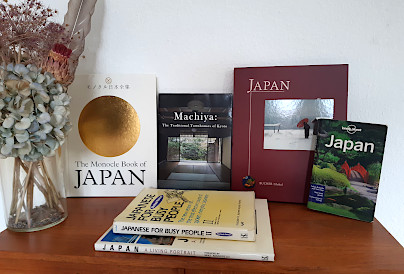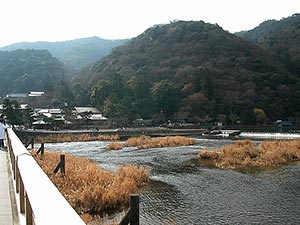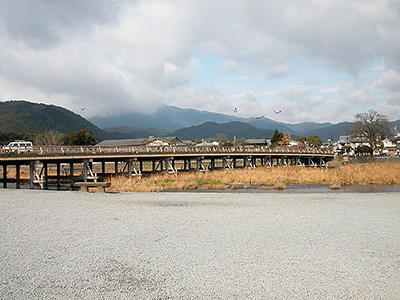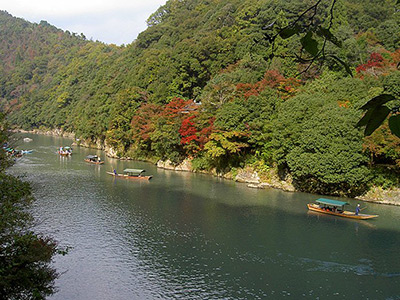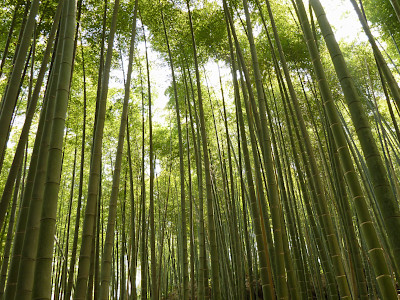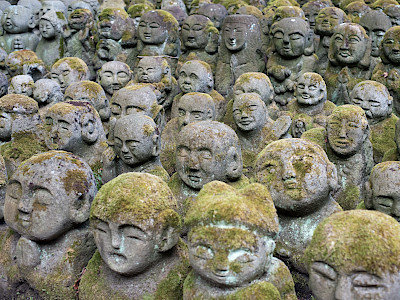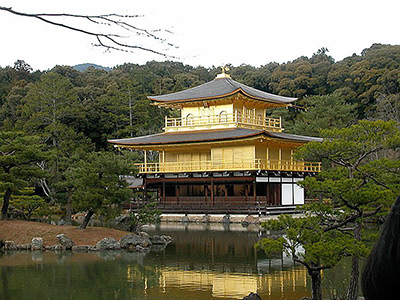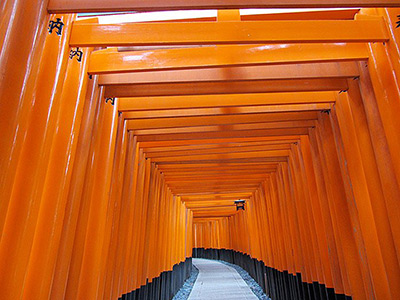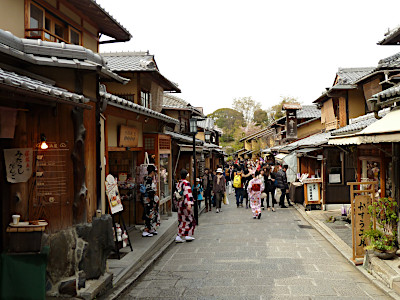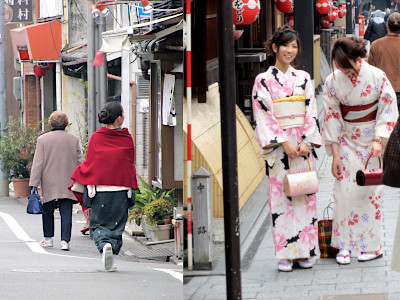Adashino Nenbutsu-ji Temple in Kyoto
This post can contain affiliate links, which means that we may receive a small commission if you make a purchase using these links.
Facts & Figures
The Buddhist temple Adashino Nenbutsu-ji is located in the Sagano area of Ukyo-ku in the north-western part of Kyoto. The temple is well-known for its more than 8000 Buddhist statues. The statues and towers were created in memory of the souls who could not get a proper burial, because they were poor and had no families. The place served as a huge cemetery. Btw the word Adashino means emptiness or ephemeral. My tip: Come here during the Sento-kuyo ceremony held in August, when thousands of candles are lit in the evening. The temple area is also known for its beautiful autumn colors. Do not miss the Otagi Nenbutsuji Temple in the direct neighbourhood, which is famous for its more than 1200 moss-covered Rakan (Arhat) sculptures.
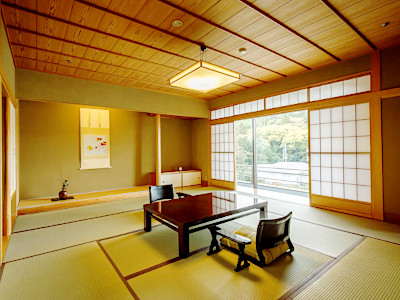 Explore Ryokans in Kyoto >
Explore Ryokans in Kyoto >
Ryokans are the perfect way to discover old Japanese culture and traditions.
- Adashino Nenbutsu-ji:
- Opening Hours - 9:00 am to 4:30 pm (March - November)
- Opening Hours - 9:00 am to 3:30 pm (December - February)
- Closed: - never
- Admission Fee - 500 yen (Adults), 400 yen (High and junior high school students), free (Elementary school students and younger)
My tips for local activities
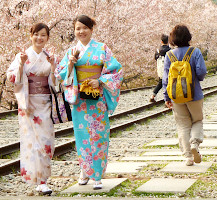
How about exploring the best parts of my favourite city Kyoto with a local guide? The personalized tour by our partner GetYourGuide can take between 2 - 8 hours. For more details check out this page >
History
During the Heian Period (794 - 1185), the area on a hill where the Adashino Nenbutsu-ji Temple stands now was an open-air burial where people abandoned the corpses of the poor without families. This happened in desperate times of epidemic, war crimes, and famine. The area was called Saiin-no-Kawara. The famous monk and founder of - Shingon Buddhism - Kobo-Daishi (774 - 835), also known as Kukai, made the decision to collect the bones and bury them. Once this was done a temple with the name Nyorai-ji was constructed in 811. Later the well-known monk and religious reformer Honen (1133 – 1212), founder of Jodo Buddhism, erected a hall (dojo) for reciting Buddhist prayers (Nenbutsu). This gave the place the name Nenbutsu-ji and made it to the Buddhist Temple you see today. For hundreds of years, people came here to bury the dead and created over time a huge cemetery. During the Meiji era (1868 - 1912) people came together to collect all the stone statues, which were scattered over a huge area and brought them to the Adashino Nenbutsu-ji Temple.
Location

Adashino Nenbutsu-ji Temple is located in the Sagano area of the Ukyo Ward in the north-western part of Kyoto near Otagi Nenbutsuji Temple.
Address: 17 Adashino-cho, Sagatoriimoto, Ukyo-ku, Kyoto, 616-8436
How to get to Adashino Nenbutsu-ji Temple?
- 30min walk from JR Saga-Arashiyama Station to Adashino Nenbutsu-ji Temple
Sightseeing spots
Top:
Main Hall - The hall was built in 1712. Inside you will find a medieval sculpture of Amida Buddha.
Saiin-no-Kawara (Riverbank of the Western Temple) - The name of the area where you can see the 8000 Buddha stone statues.
Belfry - Many visitors will ring the bell before they enter the area of the stone statues and monuments.
Festival & Events in Kyoto (dates can change without notice)
March
Higashiyama Hanatouro Festival (Early - Mid March)
The illumination of local temples and roads by thousands of lanterns in the Higashiyama neighbourhood last for 10 days and starts at 6pm until 9:30pm. It is an unforgettable experience.
April
Miyako Odori (1st - 31st)
The traditional annual spring dance of the Kyoto district Gion Kobu performed by Geiko and Maiko is a must-see on your Kyoto visit. Don't miss the most popular dances the Miyako Odori "Cherry Blossom Dances" or "Dances of the Old Capital" at the Gion Kobu Kaburenjo Theater (located close to Gion Corner).
May
Aoi Matsuri (15th)
The highlight of this festival is a large parade from the Imperial Palace through the Shimogamo Shrine and ends at the Kamigamo Shrine (Kamigamo-jinja). More than 500 people wearing aristocratic costumes from the Heian Period (794 - 1185). The Aoi Matsuri belongs with the Gion Matsuri and Jidai Matsuri as the three most famous festivals in Kyoto.
July
Gion Matsuri (whole month)
The month of July is full of different events like the Yoiyama - Kyoto's Magical Night (locals in kimonos look at the giant Gion floats the day before the parade) or the famous Yamaboko Junko (float procession on the 17th of July).
August
Sento-kuyo ceremony at Adashino Nenbutsu-ji Temple (on evenings of the last Saturday and Sunday of August)
A ceremony takes place on two evenings where candles (Sento) are lit throughout the temple grounds and a monk will chant sutras. Participants have to pay 1000 yen to get a candle and brochure.
October
Jidai Matsuri ("Festival of Ages") (22nd)
People celebrate with a large parade between Imperial Palace to Heian Shrine the anniversary of the foundation of Kyoto. App. 2000 participants wearing historical costumes from different time periods. Enjoy this great festival which lasts around 2 hours. Illumination event at Kodai-ji (end of October - beginning of December)
Where to stay in Kyoto?
Day trips from Kyoto:
My 100 Best Moments in Japan
I have visited Japan nearly every year since 2004. This is my collection of the 100 best moments in my favorite country. Enjoy the pictures and I hope you will start your own journey soon.
Find out more >
Books about Japan
Reading books is a great source of inspiration for me. Check out my recommended list of books about the fascinating country Japan.
My Book recommendations >

